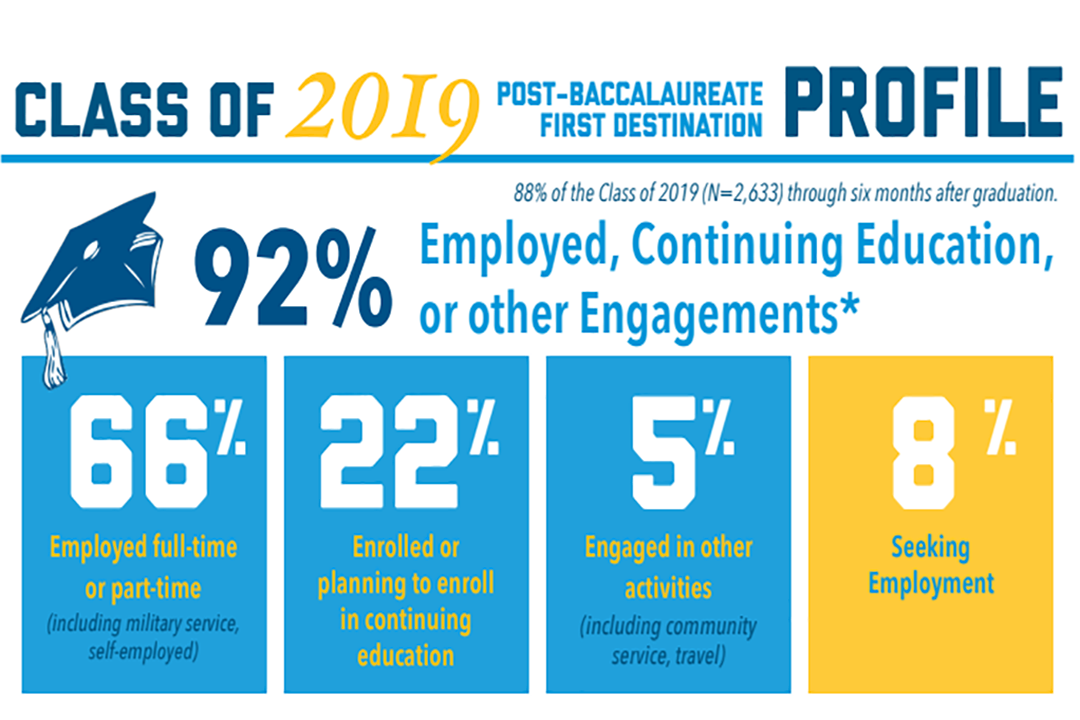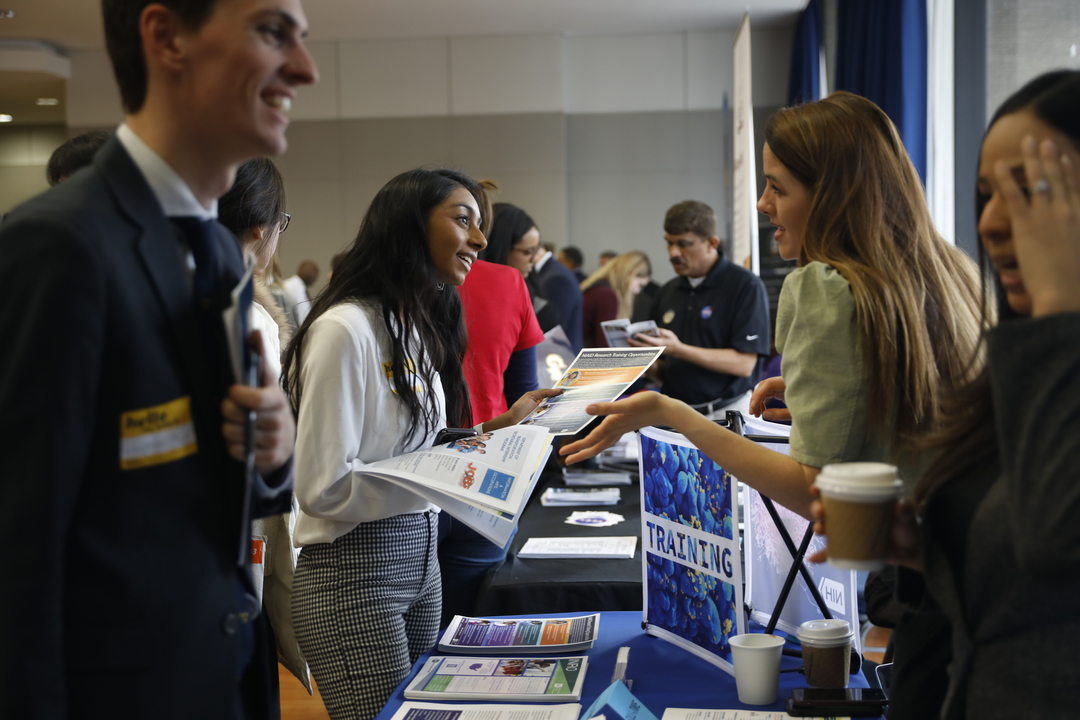By Briahnna Brown
Despite the pandemic’s impact on the global economy and higher education, about nine out of 10 graduates in the George Washington University class of 2020 reported having solidified plans within six months of graduation.
The post-baccalaureate First Destination survey, which the Center for Career Services and the Office of Survey Research and Analysis conduct, examines undergraduate employment and education outcomes within the first six months after graduation.
The data from this year’s survey will be added to the Undergraduate Employment and Education Outcomes data visualization, which helps current and prospective GW students by providing a broad look at where a GW degree in various fields of study can take them based on where alumni have gone.
The survey collected data from 77 percent of the class of 2020, a decrease from 88 percent of the class of 2019. This is likely because of the pandemic making it more difficult to collect the necessary information, said Rachel Brown, associate vice provost for university career services.
Of those respondents, 60 percent reported securing employment, compared to 66 percent in the previous year. Additionally, 30 percent of this year’s respondents reported plans to continue their education, compared to 22 percent in the previous year.
Of the students pursuing graduate education, there was an increase in the percentage of students pursuing master’s degrees (73 percent compared to 67 percent in the previous year). There was also a 10 percentage-point decrease in the number of students attending law school, which Ms. Brown said May be due in part to a change in the way the level of continuing education question was posed in the survey, as well as the increased demand from law school applicants across the country.
This year’s percentage of students pursuing graduate education is also the highest reported percentage in the past five years of the First Destination survey.
“I think some of that may be due to the economy during the pandemic,” Ms. Brown said. “Oftentimes when the economy's a little tighter you see an increase in graduate school enrollment.”
Berkley Lane, B.A. ’20, studied dance and environmental studies at GW and is now a part-time graduate student in the Environmental Resource Policy program in the Columbian College of Arts and Sciences while working full-time as an environmental policy intern with the Corn Refiners Association. She said that the rigorous coursework at GW helped foster her passion to continue learning.
She took a break the summer after graduating and spent that time applying for jobs and preparing for graduate school while thinking about her next steps to enter the professional world. Ms. Lane’s advice to students in the class of 2021 who may not yet have a job lined up is to stay in touch with GW professors, peers and academic or career counselors because they want to see students succeed.
“I was able to stay in contact with my career coach last summer, and she was extremely helpful in navigating the transition from undergrad to grad school and working full time,” Ms. Lane said.
She also advises to embrace the process of finding the best individual career path.
“Don’t put too much pressure on yourself to have a LinkedIn post ready the day you graduate,” Ms. Lane said. “It’s OK to take a breather—you just finished four years of nonstop work.”
Sammy Chuan, B.A. ’20, studied criminal justice in the Columbian College of Arts and Sciences and is pursuing a master’s degree in journalism at Northeastern University. He said that his volunteer work with the Honey W. Nashman Center for Service and Civic Engagement and his involvement with the Multicultural Student Services Center during his time at GW helped him to understand the importance of highlighting diverse voices in storytelling. His GW experiences allowed him to gain perspective, challenge himself and engage with the world.
“Being at GW helped shape me to become a student leader who is passionate about community engagement and advocacy,” Mr. Chuan said. “I am extremely fortunate to have these experiences at GW and to be able to apply them to my graduate studies at Northeastern.”
Of the students who secured employment, 65 percent work in the private sector, 26 percent work in the nonprofit sector and 9 percent work in the public sector, which is similar to the previous year’s students with 64 percent, 28 percent and 8 percent respectively. Most students (78 percent) who secured employment are working for organizations in the Mid-Atlantic region of the United States.
There was a 4 percentage-point increase in the number of employed students reporting salaries over $60,000—from 40 percent in the class of 2019 to 44 percent in the class of 2020. Five years prior, for the class of 2016, just 27 percent of respondents reported salaries over $60,000. Ms. Brown said that the Center for Career Services has been able to offer more opportunities for students and connect them to more employers during the pandemic because of the virtual landscape.
“I am so proud of the GW graduates and how they have continued to be resilient in this very difficult time,” Ms. Brown said. “I’m also proud of, and grateful for my Career Services colleagues and staff and faculty across campus and alumni who worked even harder to support students during this unprecedented time.”




